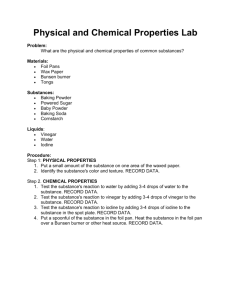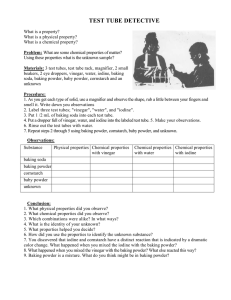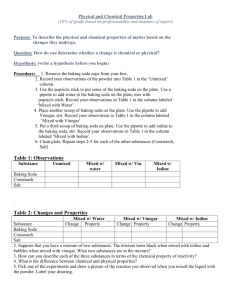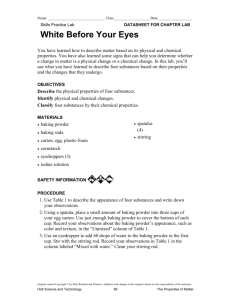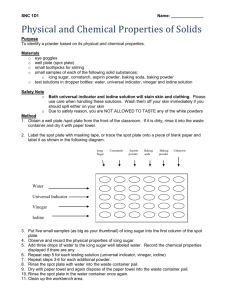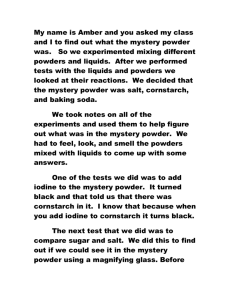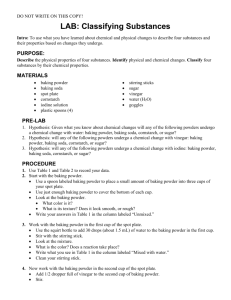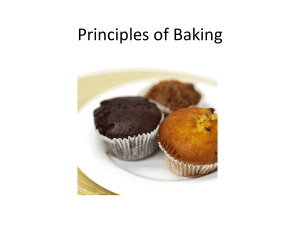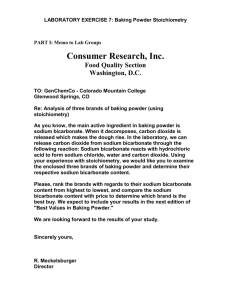Lab: Physical Vs
advertisement
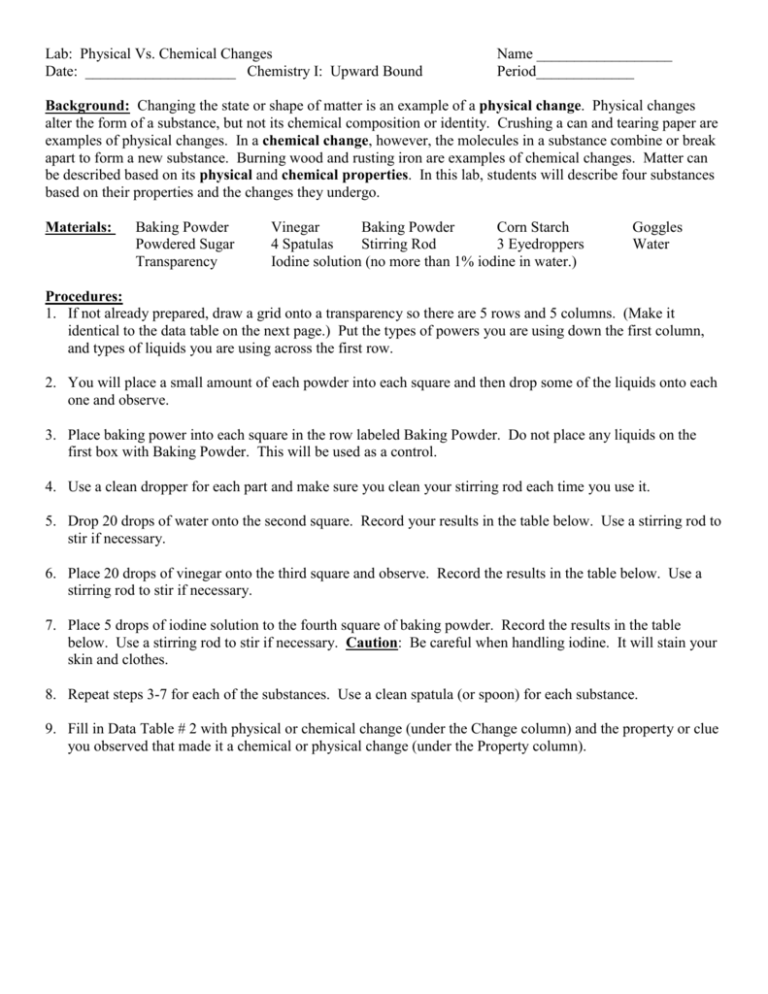
Lab: Physical Vs. Chemical Changes Date: ____________________ Chemistry I: Upward Bound Name __________________ Period_____________ Background: Changing the state or shape of matter is an example of a physical change. Physical changes alter the form of a substance, but not its chemical composition or identity. Crushing a can and tearing paper are examples of physical changes. In a chemical change, however, the molecules in a substance combine or break apart to form a new substance. Burning wood and rusting iron are examples of chemical changes. Matter can be described based on its physical and chemical properties. In this lab, students will describe four substances based on their properties and the changes they undergo. Materials: Baking Powder Powdered Sugar Transparency Vinegar Baking Powder Corn Starch 4 Spatulas Stirring Rod 3 Eyedroppers Iodine solution (no more than 1% iodine in water.) Goggles Water Procedures: 1. If not already prepared, draw a grid onto a transparency so there are 5 rows and 5 columns. (Make it identical to the data table on the next page.) Put the types of powers you are using down the first column, and types of liquids you are using across the first row. 2. You will place a small amount of each powder into each square and then drop some of the liquids onto each one and observe. 3. Place baking power into each square in the row labeled Baking Powder. Do not place any liquids on the first box with Baking Powder. This will be used as a control. 4. Use a clean dropper for each part and make sure you clean your stirring rod each time you use it. 5. Drop 20 drops of water onto the second square. Record your results in the table below. Use a stirring rod to stir if necessary. 6. Place 20 drops of vinegar onto the third square and observe. Record the results in the table below. Use a stirring rod to stir if necessary. 7. Place 5 drops of iodine solution to the fourth square of baking powder. Record the results in the table below. Use a stirring rod to stir if necessary. Caution: Be careful when handling iodine. It will stain your skin and clothes. 8. Repeat steps 3-7 for each of the substances. Use a clean spatula (or spoon) for each substance. 9. Fill in Data Table # 2 with physical or chemical change (under the Change column) and the property or clue you observed that made it a chemical or physical change (under the Property column). Data Table 1: Qualitative Observations Substance Unmixed Mixed with Water Mixed with Vinegar Mixed with Iodine Baking Powder Baking Soda Cornstarch Sugar Data Table #2: Properties and Changes Write P or C for physical or chemical change in the Change column. Write the property or clue you observed the Property column. Mixed Mixed with Mixed Mixed with Mixed Mixed with with Water with Vinegar with Iodine Water Vinegar Iodine Solution Solution Substance Change Property Change Property Change Property Baking Powder Baking Soda Cornstarch Sugar Questions: 1. What clues, or observations, did you use to decide something was a chemical change? 2. Do you think the clues that indicate a chemical change are always reliable? Why or why not? 3. When you cook food, is this an example of a chemical or physical change? Explain your reasoning. 4. Is it correct to say that chemical changes are not reversible, but physical changes are? Give examples to explain your reasoning.
